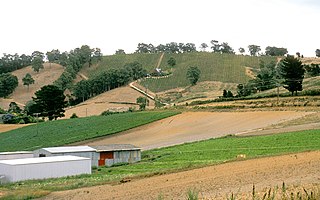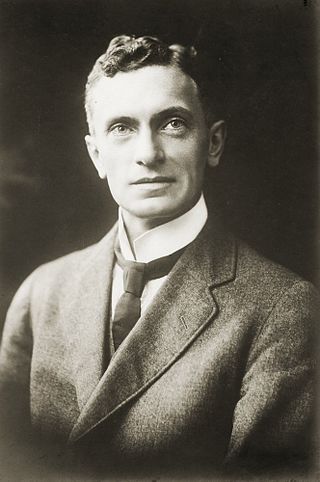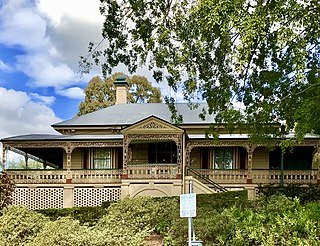
The British Museum is a public museum dedicated to human history, art and culture located in the Bloomsbury area of London. Its permanent collection of eight million works is the largest in the world. It documents the story of human culture from its beginnings to the present. The British Museum was the first public national museum to cover all fields of knowledge.

Concordia Seminary is a Lutheran seminary in Clayton, Missouri. The institution's primary mission is to train pastors, deaconesses, missionaries, chaplains, and church leaders for the Lutheran Church–Missouri Synod (LCMS). Founded in 1839, the seminary initially resided in Perry County, Missouri. In 1849, it was moved to St. Louis, and in 1926, the current campus was built.

The Australian Museum is a heritage-listed museum at 1 William Street, Sydney central business district, New South Wales, Australia. It is the oldest museum in Australia, and the fifth oldest natural history museum in the world, with an international reputation in the fields of natural history and anthropology. It was first conceived and developed along the contemporary European model of an encyclopedic warehouse of cultural and natural history and features collections of vertebrate and invertebrate zoology, as well as mineralogy, palaeontology and anthropology. Apart from exhibitions, the museum is also involved in Indigenous studies research and community programs. In the museum's early years, collecting was its main priority, and specimens were commonly traded with British and other European institutions. The scientific stature of the museum was established under the curatorship of Gerard Krefft, himself a published scientist.

Birdwood is a town near Adelaide, South Australia. It is located in the local government areas of the Adelaide Hills Council and the Mid Murray Council.

The Adelaide Hills region is located in the southern Mount Lofty Ranges east of the city of Adelaide in the state of South Australia. The largest town in the area, Mount Barker is one of Australia's fastest-growing towns. Before British colonisation of South Australia, the area was inhabited by the Peramangk people.

Gotthard Daniel Fritzsche was a Prussian-Australian pastor who became instrumental in furthering that religion in South Australia. He was born in Liebenwerda, in the Electorate of Saxony, Germany, and migrated to Australia in 1841. From 1842 to 1863, he was pastor of the Evangelical Lutheran Church. He died and was buried at Lobethal, South Australia.

Lobethal is a town in the Adelaide Hills area of South Australia. It is located in the Adelaide Hills Council local government area, and is nestled on the banks of a creek between the hills and up the sides of the valley. It was once the centre of the Adelaide Hills wool processing industry, which continued until around 1950. The mill buildings are now used by a number of cottage industry and handcraft businesses. At the 2016 census, Lobethal had a population of 2,135.

Museum Africa or MuseuMAfricA is a historical museum in Newtown, Johannesburg, South Africa.

Eudunda is a town in the Mid North region of South Australia, situated 110 kilometres northeast of Adelaide in the Regional Council of Goyder. As of 2021, Eudunda had a population of 815 people. Eudunda is known as the birthplace of author and educator Colin Thiele.

Johann Friedrich Krummnow was a German-born settler in Australia. He arrived in South Australia in 1839 and in 1852 he founded a community named Herrnhut located near Penshurst in western Victoria. This was Australia's first intentional community based on the principles of shared property and fervent prayer. Krummnow died at Herrnhut in October 1880.

Walla Walla or Wallawalla is a town in the Murray region of southern New South Wales, Australia and is serviced by the Greater Hume Shire Council. It is about 39 kilometres (24 mi) north of Albury-Wodonga and 130 kilometres (81 mi) south of Wagga Wagga.

The Toitū Otago Settlers Museum is a regional history museum in Dunedin, New Zealand. Its brief covers the territory of the old Otago Province, that is, New Zealand from the Waitaki River south, though its main focus is the city of Dunedin. It is New Zealand's oldest history museum.
Australian Lutheran College (ALC), formerly Luther Seminary and Lutheran Teachers College, is a higher education institution serving the Lutheran Church of Australia and a registered teaching institution of University of Divinity. and the Adelaide College of Divinity.
Old Lutherans were German Lutherans in the Kingdom of Prussia, especially in the Province of Silesia, who refused to join the Prussian Union of churches in the 1830s and 1840s. Prussia's king, Frederick William III, was determined to unify the Protestant churches, homogenize their liturgy, organization, and architecture. In a series of proclamations over several years the Church of the Prussian Union was formed, bringing together a group that was majority Lutheran and minority Reformed. As a result, the government of Prussia had full control over church affairs, with the king recognized as the leading bishop.

Herbert Basedow was an Australian anthropologist, geologist, politician, explorer and medical practitioner.

Johann Flierl was a pioneer Lutheran missionary in New Guinea. He established mission schools and organised the construction of roads and communication between otherwise remote interior locations. Under his leadership, Lutheran evangelicalism flourished in New Guinea. He founded the Evangelical Lutheran Mission in the Sattelberg, and a string of filial stations on the northeastern coast of New Guinea including the Malahang Mission Station.

Pitcairn Island Museum is a museum in Pitcairn Island, a British Overseas Territory in the southern Pacific Ocean. Established in 2005, the museum's collection includes archaeological material from the earliest Polynesian settlers, as well as artefacts from HMS Bounty.

The National Museum of the History of Ukraine (MIST) (Ukrainian: Національний музей історії України) illustrates Ukraine's history from ancient times to the present. It is one of the leading museums in Ukraine. It holds about 800,000 items in its collection, and usually has approximately 22,000 items on permanent display. The museum holds world-famous archaeological, numismatic, ethnographic and weapons collections, examples of decorative and applied arts, manuscripts, prints, paintings and drawings, as well as relics of the Ukrainian national liberation movement of the 20th century.

The Queensland Women's Historical Association is a historical society in Brisbane, Queensland, Australia which studies the history and heritage of Queensland, including its pioneer families and the contribution made by women. The Association is headquartered at the heritage-listed house Miegunyah in Bowen Hills.

The Museum of Lands, Mapping and Surveying is a museum at 317 Edward Street, Brisbane, Queensland, Australia. It collects and exhibits material relating to the surveying of Queensland and the maps created. It is a sub-branch of the Queensland Museum. It actively digitises and makes available historic maps and aerial imagery under open licences.



















